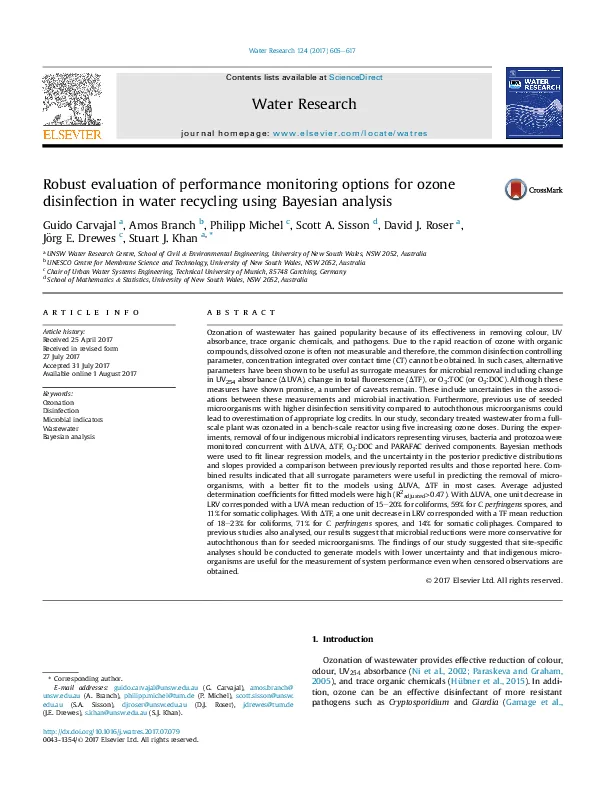Ozonation of wastewater has gained popularity because of its effectiveness in removing colour, UV absorbance, trace organic chemicals, and pathogens. Due to the rapid reaction of ozone with organic compounds, dissolved ozone is often not measurable and therefore, the common disinfection controlling parameter, concentration integrated over contact time (CT) cannot be obtained. In such cases, alternative parameters have been shown to be useful as surrogate measures for microbial removal including change in UV254 absorbance (DUVA), change in total fluorescence (DTF), or O3:TOC (or O3:DOC). Although these measures have shown promise, a number of caveats remain. These include uncertainties in the associations between these measurements and microbial inactivation. Furthermore, previous use of seeded microorganisms with higher disinfection sensitivity compared to autochthonous microorganisms could lead to overestimation of appropriate log credits. In our study, secondary treated wastewater from a fullscale plant was ozonated in a bench-scale reactor using five increasing ozone doses. During the experiments, removal of four indigenous microbial indicators representing viruses, bacteria and protozoa were monitored concurrent with DUVA, DTF, O3:DOC and PARAFAC derived components. Bayesian methods were used to fit linear regression models, and the uncertainty in the posterior predictive distributions and slopes provided a comparison between previously reported results and those reported here. Combined results indicated that all surrogate parameters were useful in predicting the removal of microorganisms, with a better fit to the models using DUVA, DTF in most cases. Average adjusted determination coefficients for fitted models were high (R2 adjusted>0.47). With DUVA, one unit decrease in LRV corresponded with a UVA mean reduction of 15e20% for coliforms, 59% for C. perfringens spores, and 11% for somatic coliphages. With DTF, a one unit decrease in LRV corresponded with a TF mean reduction of 18e23% for coliforms, 71% for C. perfringens spores, and 14% for somatic coliphages. Compared to previous studies also analysed, our results suggest that microbial reductions were more conservative for autochthonous than for seeded microorganisms. The findings of our study suggested that site-specific analyses should be conducted to generate models with lower uncertainty and that indigenous microorganisms are useful for the measurement of system performance even when censored observations are obtained.
